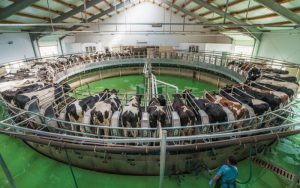
The world is facing as food crisis, with the United Nations stating the war in Ukraine had compounded problems that have been brewing for years.
Climate change, the covid-19 pandemic and a reliance on big producers to supply food staples have led to shortages, rising costs and more people going hungry.
That scarcity of food has pushed prices up but New Zealand producers, like many globally, can’t realise that value as inflation pushes up the cost of production.
Profits and margins are being slashed, forcing budgets to be cut as costs soar.
Some commentators believe these food insecurity problems are an opportunity for growers to re-engage with consumers and show they are not profiting from inflated prices.
ANZ Bank data from the first quarter of this year shows the cost of operating a dairy farm increased 12.7% year-on-year and by 10.7% for a sheep and beef farm.
AgFirst has calculated the breakeven point for dairy farmers this season will be close to $7/kg/MS up from $6.40-$6.50 a year ago.
A 20% increase in labour costs in the last year mean many Green kiwifruit growers will just break even or make a loss this season while University of Otago research has calculated that the cost of wheat constitutes just 15c per loaf of bread.
Canterbury milling wheat is selling as high as $650 a tonne, up from $420 a year ago, while new season contracts for premium mill wheat are being offered at $630, an increase of more than $200 in a year.
Domestic food inflation continues to soar, with Stats NZ reporting a 6.8% increase in the year to May with grocery food rising 7.4%, restaurant meals, fruit and vegetables 10% and meat, fish and poultry 7%.
It’s not just food demand causing inflation.
Business NZ director of advocacy Catherine Beard recently told farmers the cost of doing business has risen 34.6% in four years.
“Government is very much into centralisation; in Business NZ we think that is not a good thing.”
The ANZ Bank report warns global shortages of fertiliser and grain will have international repercussions.
“The shortages of these basic feed stocks will underpin global production costs and keep production in check, but it will also erode the ability of poorer countries to import the higher-value foods that New Zealand exports.”
It adds that higher food production costs have triggered greater global food protectionism.
The European Union will assist farmers to grow crops on 170,000ha of land set aside as fallow to produce an estimated 600,000 tonnes of grain to help mitigate food price spikes and potential shortages.
Hamish Gow, the Sir Graeme Harrison Professorial Chair in Global Value Chains and Trade at Lincoln University, says rampant inflation, investigations into the supermarket duopoly and disrupted supply chains have focused consumer minds on food costs and availability, making it perfect timing for growers to prove they are not making excessive profits.
“The challenge is recognising high prices in NZ are not driven by farmers but by the value chain, mainly wholesalers and supermarkets,” he says.
NZX head of analytics, Julia Jones, says the world is changing permanently, and it is a case of weathering these changes while looking for opportunities that will emerge.
“We need to remind the world that we are good for the world, that we produce and export amazing nutrition.”























